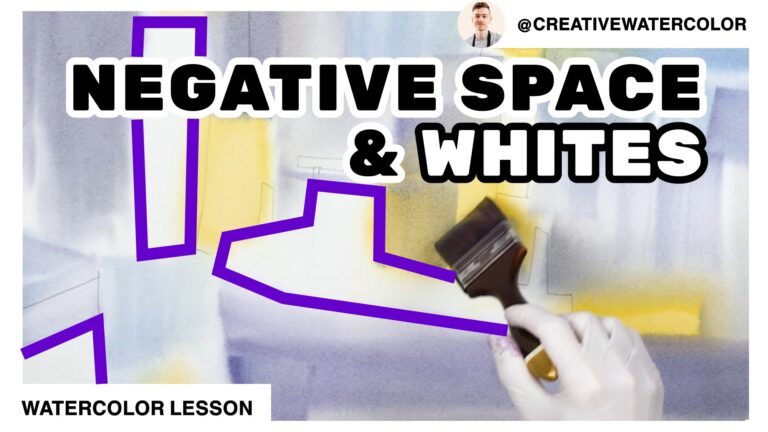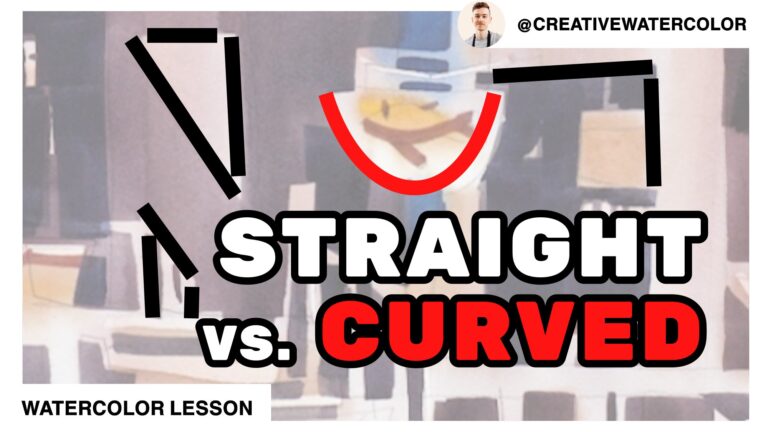The technique to improve your watercolors for good is, of course, connecting washes. In this easy-to-follow tutorial you’ll learn how I connect my washes and how you too can do this easily in your own paintings!
Hello everyone, welcome back!
In this Part 2 of the ‘Seaside town demo’ I’m going to show you the next step in developing our painting.
The focus of this lesson is the importance of connecting washes.
Often we see beginners struggle to keep their paintings from crumbling – be it in terms of color, value or technique.
Connecting washes is a technical aspect of watercolor painting that is so important yet often overlooked. Learn to implement this technique and improve your watercolors for good!
This goes back to looking at the bigger picture. What is the goal of painting? Surprising as it may sound, it’s not a beloved pet, human figure or beautiful landscape. While subject matter is important, it inspires us to create, our ultimate goal is to achieve unity. All masterpieces in human history have one thing in common: a strong sense of unity – simply put everything they contain belongs. Painting that has unity holds together, not only visually but also conceptually. Today we’re focusing on the visual, technical aspect of achieving unity.
One of the things that help give painting a sense of unity is correct technical approach, in our case: connected washes. The basic premise of connecting washes is the idea of painting a large mass of value and color in one go. This value mass can be separated later, objects and specific shapes can be later more defined, refined and picked out. In watercolor, you can easily define and separate but you can only achieve that typical watercolor fluidity if you connect your washes.
This is all well and good, but do I have to change the way I paint? No, not at all! Whatever your preferred approach and stylistic preference, you can always apply this technique without compromising your usual way to work.
When connecting your shapes into one large wash there are two things to keep in mind: color and value.
Tonal value and connected washes
When working with connected washes the ideal approach is from light to dark. That way you paint all shapes that are say light middle value and darker.
You can paint these values as layers – what I do here – or you can incorporate all value variations in this single wash.
Regardless of the exact execution, the point is to have connections throughout the painting. Separation of planes and shapes is either gradual or done at the very end. I will demonstrate this alternative approach in the future.
Color and connected washes
Because of my colorful underpainting I opted for simpler, flatter connected layer (color-wise). But you can use as much color at this stage as you want or need. This technique isn’t limited to being painted on top of a wet in wet underpainting either.
Connecting washes isn’t a specific a style or way to approach watercolor. It’s a necessary practice regardless of your personal preference, approach, style or subject.
My idea behind color in this demo is simple: I slightly alter the temperature of the connected wash throughout – from warm to cool. What I look for here ties back to our first video and that is the need for color dominance. Notice how I go back to some parts of the wash and charge them with pure color, adding color accents and points of interest to otherwise uneventful areas.
And that’s all for today’s demo. I hope you enjoyed the video. Please let me know in the comments below if you have any questions or suggestions. Please like the video if you enjoyed it and I’ll see you soon in Part 3!




